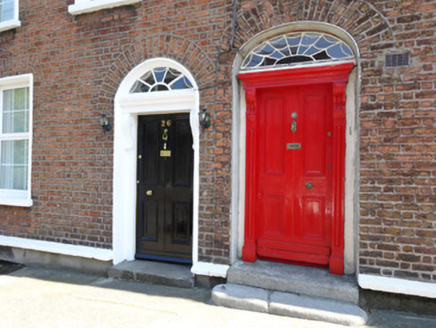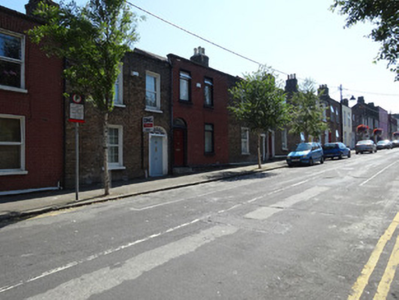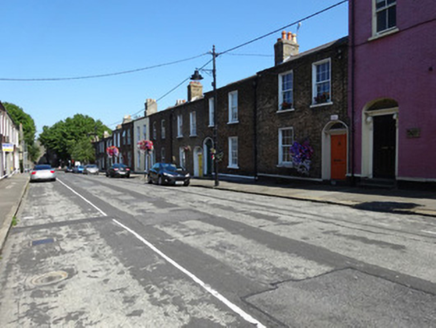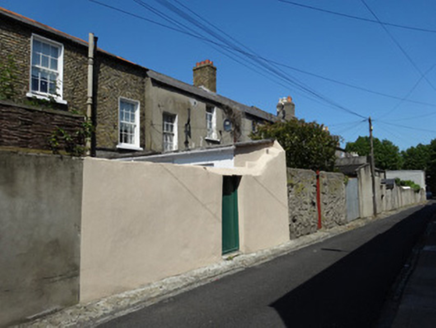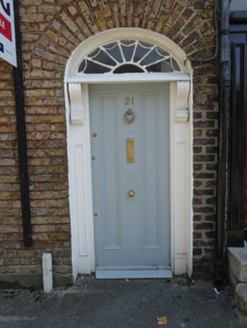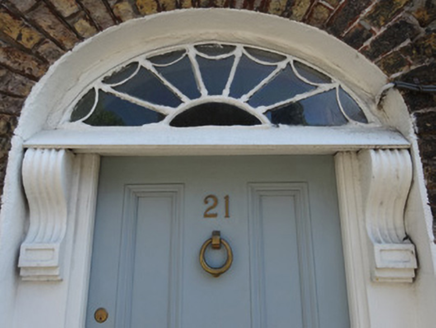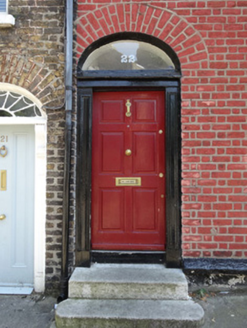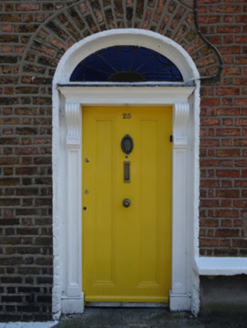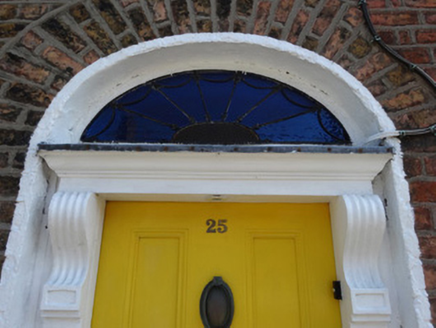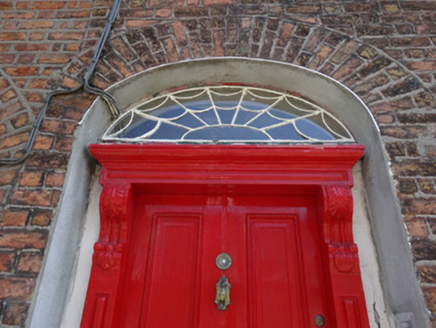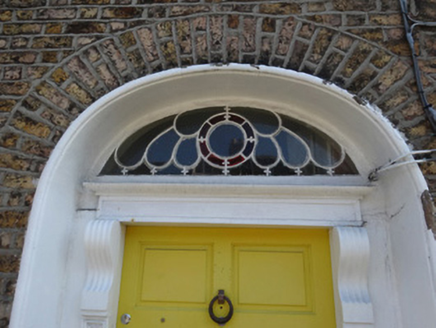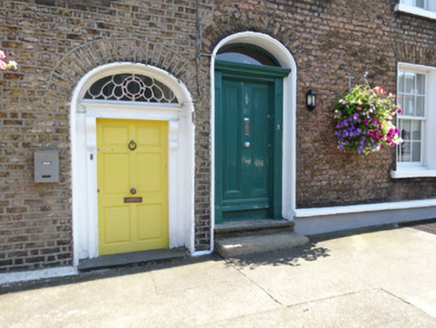Survey Data
Reg No
50060450
Rating
Regional
Categories of Special Interest
Architectural, Artistic
Original Use
House
In Use As
House
Date
1810 - 1860
Coordinates
316435, 235489
Date Recorded
02/09/2014
Date Updated
--/--/--
Description
Terrace of twelve two-bay two-storey houses, built in stages between c.1820 and c.1850, with basements to houses numbering 26 to 32. M-profile pitched slate and tile roofs with terracotta ridge tiles, brick and rendered chimneystacks with clay chimney pots over party walls, and with cast-iron and replacement rainwater goods. Roofs set behind parapet walls with granite coping. Brick and smooth-rendered facades with granite plinth courses and smooth-rendered plinths. Brickwork laid in Flemish bond. Brick and smooth-rendered elevations to rear. Square-headed window openings with painted granite sills and replacement uPVC windows. Segmental-arch door openings with variety of doorcases and fanlights. Timber doorcases with decorative console brackets, plain, timber spoked and lead cobweb or teardrop fanlights. Timber panelled doors. Doors open onto granite steps. Wrought-iron bars and granite surrounds to basement well openings. Granite kerbstones to concrete pavement. Rear gardens bounded to rear lane, Rutland Place North, by concrete block and rubble stone walls, having variety of gate openings.
Appraisal
This terrace of beautifully-maintained houses on the southern side of Summer Street North was built in stages during the early and mid-nineteenth century. The street itself was laid out c.1806 and was developed in the years that followed to provide housing for Dublin’s professional classes. Whilst each house is unique, they share a general composition of two bays and two storeys. Those to the southwest have basements. The houses have lost their original windows, but a number of very good timber doorcases, panelled doors and early fanlights survive. No. 30 has an attractive teardrop fanlight, whereas No. 27 has a cobweb fanlight. These types of fanlights were popular in early nineteenth-century Dublin and can be seen throughout the city and inner suburbs.
